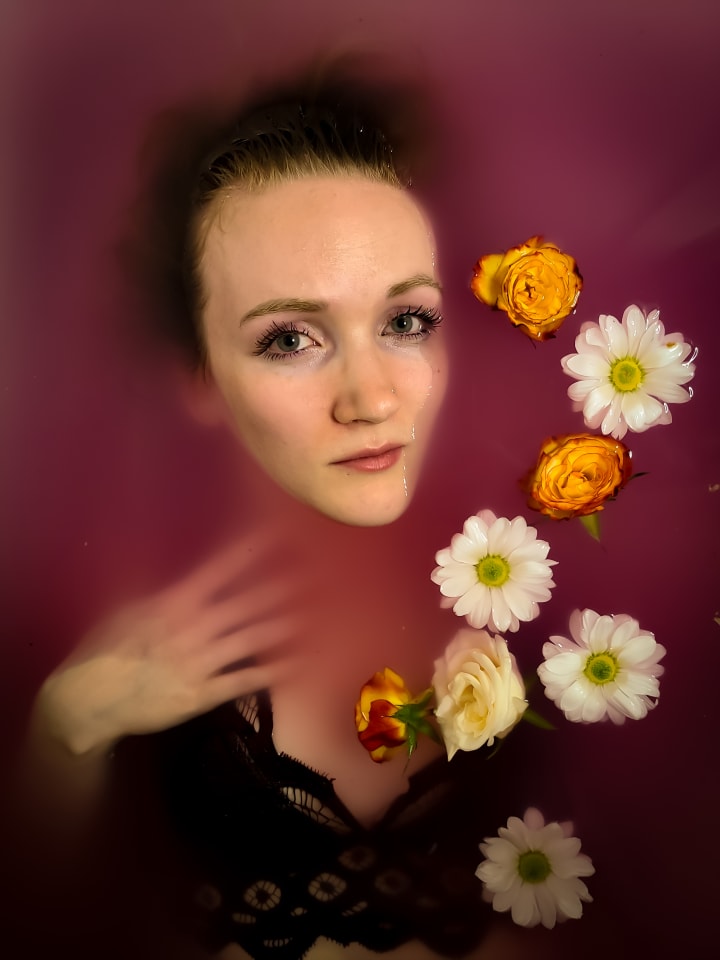Let's Get Real
Breaking the Depression Stigma

We’ve all heard the word “depression.” We’ve all known someone with “depression.” But for those that don’t suffer, it may be hard to understand. What IS “depression?” How does it work? Why does it turn our loved ones into people we don’t recognize? Why does it push people to take their own lives? Unfortunately, doctors and scientists don’t have answers for every single aspect of depression, but there is a lot of research that explains the ins and outs of it. I’m here to share some of the research I’ve compiled to help those without depression understand those with depression. The stigma around individuals who struggle with it, or any mental health illness, has created a barrier - I want to break that barrier. I also want to make it clear that I am NOT a mental health clinician, only an individual that has suffered with multiple mental health illnesses and witnessed firsthand how this stigma has affected others.
Let’s start by getting into some general facts about depression. Millions of all ages, genders and backgrounds suffer. Nearly 265 million. Onset usually begins in teen years, twenties or thirties, but can present at any age. Although men and women are affected, depression presents more often in women, but this could be due to the fact that women are more likely to seek treatment. Even so, three quarters of low- and middle-income individuals receive no treatment at all, leading to severe depression and increased suicide rates. There are approximately 800,000 deaths by suicide each year worldwide, and it is the second leading cause of death among 15 to 29 year olds. That being said, not every person suffering from depression is contemplating suicide and not everyone’s depression stems from the same cause.
One of the most important pieces of diagnosing depression is figuring out the cause and taking any risk factors into consideration. Oftentimes, depression is caused by unbalanced brain chemistry, or neurotransmitters interacting with the neurocircuits incorrectly, leading to the hypothalamus secreting too much cortisol. Hormonal changes also involve issues with neurotransmitters - too much or too little estrogen can alter neurotransmitter levels and lead to feelings of depression. It can also be caused by biological differences, or physical changes in the brain. For example, someone suffering from a traumatic brain injury is at greater risk to develop depression due to the changes in their brain. Lastly, inherited traits from blood relatives that suffer from depression can lead to increased chances of an individual developing it. However, this is not the case for everyone.

Depression also has many underlying risk factors, such as: low self-esteem, traumatic or stressful events like abuse or death of a loved one, chronic illnesses, abuse of drugs and/or alcohol, and history of other mental health illnesses like eating disorders and post-traumatic stress disorder (PTSD). These can also lead to depression being misdiagnosed or missed completely. Sometimes it can be difficult to recognize, especially because there are many types of depression with variations of symptoms that can be mild, moderate or severe.
Episodes can range from mild to severe, depending on the type. Some general symptoms of depression include: feelings of sadness, emptiness or hopelessness, angry outbursts or irritability, loss of interest in typical day to day activities, sleep and appetite disturbances, anxiety, trouble thinking clearly or concentrating, unexplained physical problems like headaches and back pain, and suicidal thoughts or ideation. Here, we will take a look at the different types of depression and what they look like.
-- Recurrent depressive episodes are when an individual has repeated episodes of low mood, loss of interest or enjoyment and reduced energy leading to less physical activity, lasting two weeks or more. This may often present with symptoms of anxiety as well, such as: disturbed sleep and appetite, feelings of guilt and low self-worth, and poor concentration. When the episodes are severe, the individual may be unable to continue with regular daily activities including work, social, and domestic.
-- Bipolar affective disorder typically consists of both manic and depressive episodes with normal activity in between. During a manic episode, one may experience elevated or irritable mood, over-activity, higher self-esteem, and a decreased need for sleep.
-- Anxious distress is depression with unusual restlessness or worry about events that may or may not happen, often overthinking “what if” circumstances.
-- Melancholic features consist of severe depression episodes with lack of response to things that would typically bring the individual joy or pleasure. It is often associated with early waking with worse moods in the morning, major appetite changes, feelings of guilt, agitation, and sluggishness.
-- Depression with atypical features includes the ability for one to be temporarily cheered by happy events. It is also common to experience increased appetite, excessive need for sleep, sensitivity to rejection, and sometimes having a heavy feeling in the arms or legs.
-- Depression with psychotic features is accompanied by delusions or hallucinations.
-- Catatonic depression includes motor activity that’s uncontrollable or purposeless. Sometimes an individual with this type of depression may also have a fixed or inflexible posture.
-- Peripartum or postpartum depression occurs during pregnancy or in the months and weeks following delivery. This often resolves within six months to a year, but may last much longer for some women.
-- Seasonal pattern depression is exactly how it sounds - depression related to seasonal changes and reduced exposure to sunlight, leading to lower levels of vitamin D.
On top of the multiple different types of depression, there also several other mental health disorders that include similar or identical symptoms. Dysthymia is a disorder with more chronic depression symptoms but is considered much less severe. Bipolar disorder, types I and II, can cause sudden and severe mood swings, causing mania and depression. Type I is similar to bipolar affective disorder, while type II is less severe. Then there is premenstrual dysphoric disorder (PMDD), which many people often mistake for PMS, or premenstrual syndrome. Although PMDD is a form of PMS, it is much more severe. PMDD leads to depression symptoms associated with hormonal changes prior to the onset of a monthly period. Keep in mind that possible treatments for PMDD may be much different than treatments for clinical depression.
Speaking of treatments, it is important to be aware of all available options. I want to discuss ALL treatment options and what they entail so both those who suffer and those who do not know what to expect. To start, let’s talk about medication. In recent years, more and more individuals are being prescribed medications for mental health illnesses while some choose to self-medicate with opiates, recreational drugs, or alcohol. Prescribed medications can be beneficial but it often takes a trial and error approach to find one that works. Some people are lucky enough to find the right medication on the first try and others may have to try multiple different ones. There are several types of medications including: selective serotonin reuptake inhibitors (SSRIs), serotonin-norepinephrine reuptake inhibitors (SNRIs), tricyclic antidepressants (TCAs), and less common monoamine oxidase inhibitors (MAOIs). Each medication is used to target and decrease the effects of depression in slightly different ways, and not all types work for everyone. SSRIs are the most commonly prescribed medication for depression and other mental health illnesses. It’s also important to understand that many of these medications can be used to treat more than one mental health illness, so those who struggle with multiple illnesses may consider a prescription that will provide more than one benefit.
Another treatment option is psychological therapy. There are two types of commonly used therapies: cognitive behavioral therapy (CBT) and interpersonal psychotherapy (ITP). CBT is a type of talk therapy where you speak with a mental health counselor in a structured way for a limited amount of sessions. The idea is that this type of therapy will help you become aware of negative thinking and view challenging situations clearly and act in a healthier manner. CBT has even shown success in those with no mental health illnesses, teaching them how to manage stress more efficiently. ITP is a type of therapy that focuses on the individual as well as their relationships with others. This can be helpful in repairing relationships that may have been damaged due to one’s mental health illnesses. Sometimes, when other therapies have been unsuccessful, a licensed mental health physician may suggest alternate procedures called brain stimulation therapies like electroconvulsive therapy (ECT) or transcranial magnetic stimulation (TMS). These are not used as often because other treatment options are usually successful and less invasive.

Overall, there are steps that can be taken to manage or prevent depressive episodes. Of course, preventative steps may not be enough for many people. These steps are generally pretty simple, however they may sometimes feel extremely difficult to someone suffering from mental health illnesses. Taking steps to control stress in one’s life is very important and can help a great deal in managing depression and anxiety, boosting self-esteem and having a sense of control over one’s life. Think about the friends and family members that have supported you through everything and reach out to them. These individuals will be key in helping you through dark times and remaining above water. If things continue to go downhill, seek treatment as soon as possible before it gets worse, and consider long-term maintenance treatment to prevent relapses. Lastly, please remember there are resources for those who suffer from depression, and any mental health illnesses. If you or a loved one is exhibiting signs of severe depression or suicidal ideation, call the suicide hotline. In the United States, the hotline number is 1-800-273-8255. For those outside of the US, all hotline numbers can be found online. Call, text, reach out. Don’t ever be afraid to ask for help.
About the Creator
Ashley Beatty-Pernetti
Wife. Mom. Creator.
Just a messy 29-year-old, wading her way through life, one word at a time.
Raising mental health awareness with the written word and firsthand experience.
Both fiction and non-fiction stories to nourish your soul.






Comments
There are no comments for this story
Be the first to respond and start the conversation.